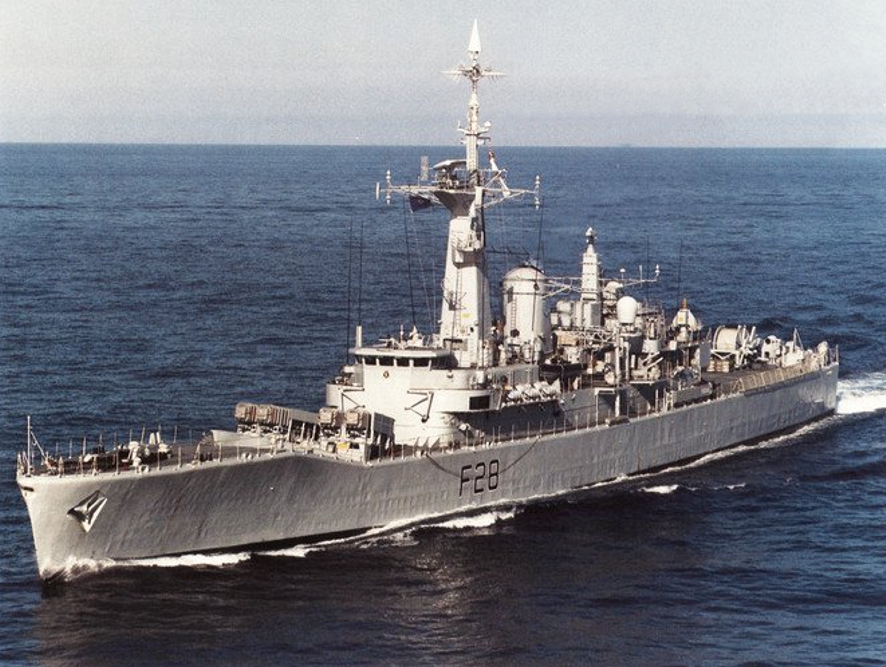Back due to popular demand, a long-form THREAD on the story of aircraft carriers and the Indian Navy. 

The Indian Navy's carrier story reaches back to before the creation of the modern Indian Navy, into the period immediately after partition. While the Raj was dissolved in 1947 it took almost a decade for the British-led Royal Indian Navy to transition into an Indian-led service. 

From independence until 1958 the post of Commander in Chief of the Royal Indian Navy &, after 1950, the Chief of the Naval Staff of the Indian Navy was held by a series of British officers:
R.Adm John Talbot Hall
V.Adm William Parry
Adm Charles Pizzey
V.Adm Stephen Hope Carlill



R.Adm John Talbot Hall
V.Adm William Parry
Adm Charles Pizzey
V.Adm Stephen Hope Carlill


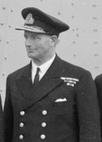
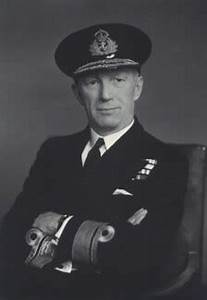
There was also a degree of agreement within the budding Indian officer corps and defence establishment, dating back even before independence, that an aircraft carrier and naval air arm would be necessary. In part influenced by the Second World War experience of the Royal Navy. 

Unfortunately a number of factors conspired to place this goal beyond the reach of the newly independent Indian state.
Firstly the vast upheaval of partition and the poor state of India's economy ensured that the naval budget remained limited.
Firstly the vast upheaval of partition and the poor state of India's economy ensured that the naval budget remained limited.
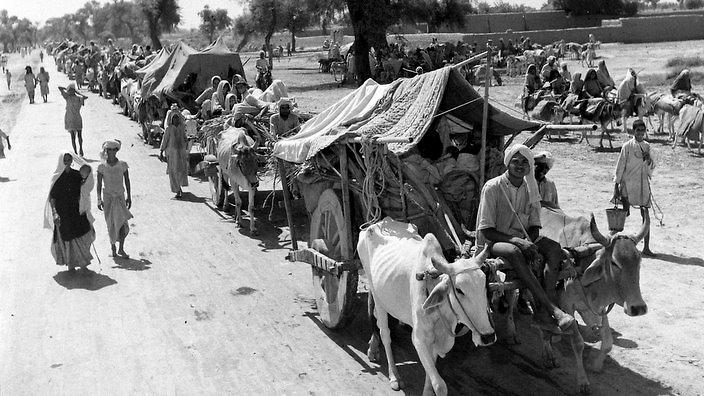
Secondly, the outbreak of the Korean war in 1950 meant that the British Government prevented the sale of key items of surplus military equipment for the duration of the conflict, including their mothballed aircraft carriers. 



Thirdly, India was engaged in a brief war with Pakistan over Kashmir between 1947 and an eventual ceasefire in January of 1949. 

By 1955 all these factors had begun to shift, with the the Korean War winding down Britain began to release its surplus warships for disposal.
India was also in a more stable position with a modestly growing naval budget and an economy that was slowly beginning to recover.
India was also in a more stable position with a modestly growing naval budget and an economy that was slowly beginning to recover.

Enter (or should that be re-enter?) stage left Lord Louis MountbattenBritain's new First Sea Lord and the last Viceroy of India. He threw his weight behind the Indian carrier lobby and worked to convince India's Prime Minister, Jawaharlal Nehru, that India should have a carrier. 

The last British Chief of the Indian Naval Staff, Vice Admiral Sir Stephen Hope Carlill, who had commanded the aircraft carrier HMS Illustrious from 1950 to 1951, arrived in-post three months after Mountbatten and provided another voice in support of an Indian carrier. 

With strong support within the Indian Navy and Mountbatten's weight behind the initiative Prime Minister Nehru was soon convinced and the project began to move fast, acquisition of the 1942 pattern light fleet carrier HMS Hercules and two squadrons of aircraft was agreed in 1957. 

Hercules had been laid down at the Vickers Armstrong shipyard on the Tyne in October 1943, she was launched in September 1945. Her fitting out was suspended in May 1946, with the ship 75% complete. She had her hull preserved and was laid up in the Gareloch in 1947. 

Following her purchase in 1957 she was moved to the Haarland and Wolff yard in Belfast for completion and modification.
This included replacement of most of the ship's electrical equipment, modification of the deck to operate modern jet aircraft & fitting a Flag officer's suite.
This included replacement of most of the ship's electrical equipment, modification of the deck to operate modern jet aircraft & fitting a Flag officer's suite.

Whilst the ship was being converted for Indian use their first fixed wing naval air squadron was under training at RNAS Brawdy in Pembrokeshire.
INAS 300 was officially commissioned by Vijaya Lakshmi Pandit, India's high commissioner to the UK, on July 7th 1960.
INAS 300 was officially commissioned by Vijaya Lakshmi Pandit, India's high commissioner to the UK, on July 7th 1960.

Training on the Hawker Seahawk took place at breakneck speed by modern standards with Indian and British Fleet Air Arm officers and ratings working relentlessly to develop the skills necessary to operate aircraft from the new carrier, which was due to be delivered in 1961. 

A second squadron, INAS 310, stood up in March 1961 equipped with French-made Breguet Alizé anti-submarine aircraft. 


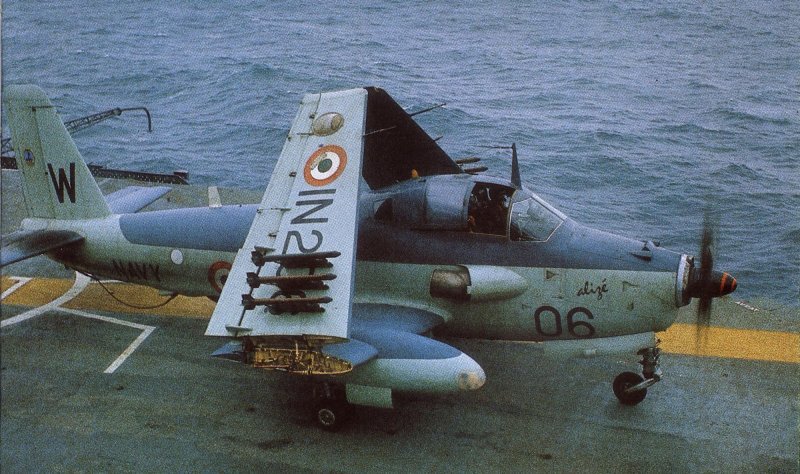
The carrier, renamed INS Vikrant (meaning Bold/Powerful), was commissioned at the Haarland and Wolff yard in Belfast on March 4th 1961 under the command of Captain Pritam Singh. 

The first deck landing took place less than three months later off the Isle of Wight with Lt Cdr Radhakrishna Hariram Tahiliani, nicknamed "Tally-Ho", catching a wire in Seahawk IN 156. 



Tahiliani would go on to attain the rank of Admiral and became the Chief of the Naval Staff between 1984 and 1987. During which time he oversaw the purchase of India's second carrier. INS Viraat, the former HMS Hermes. 



Trials and initial deck operations in UK waters were followed by an intensive six week work-up programme in the Mediterranean, which lasted until October. Here she is pictured entering the Grand Harbour in Malta. 
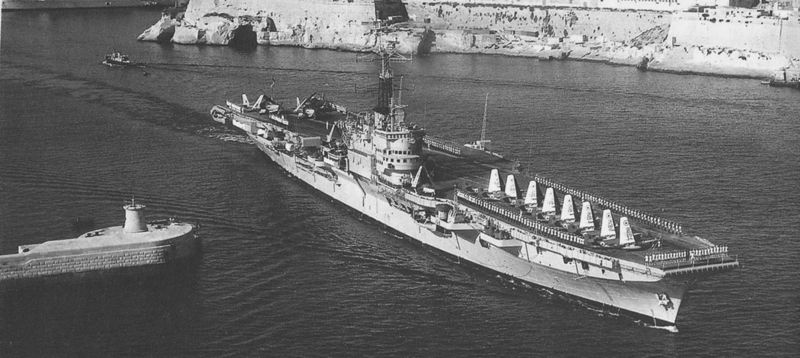
Following her work-up Vikrant sailed East back to India, arriving in Bombay, where she was greeted by India's Prime Minister and other dignitaries, to be formally received into the fleet on November 4th 1961. Receiving her Alize squadron shortly after. 

A month later she would see her first active operational use, deployed to patrol west of the Portuguese enclave of Goa along with a pair of destroyers, deterring foreign intervention in India's annexation of the territory. 



While she continued to exercise and conducted numerous port visits during the first half of the 1960s Vikrant played no part in the Sino-Indian war of 1962 or the Indo-Pakistani war of 1965, due to being in deep refit at the time, although INS 300 provided air defence for Mumbai. 


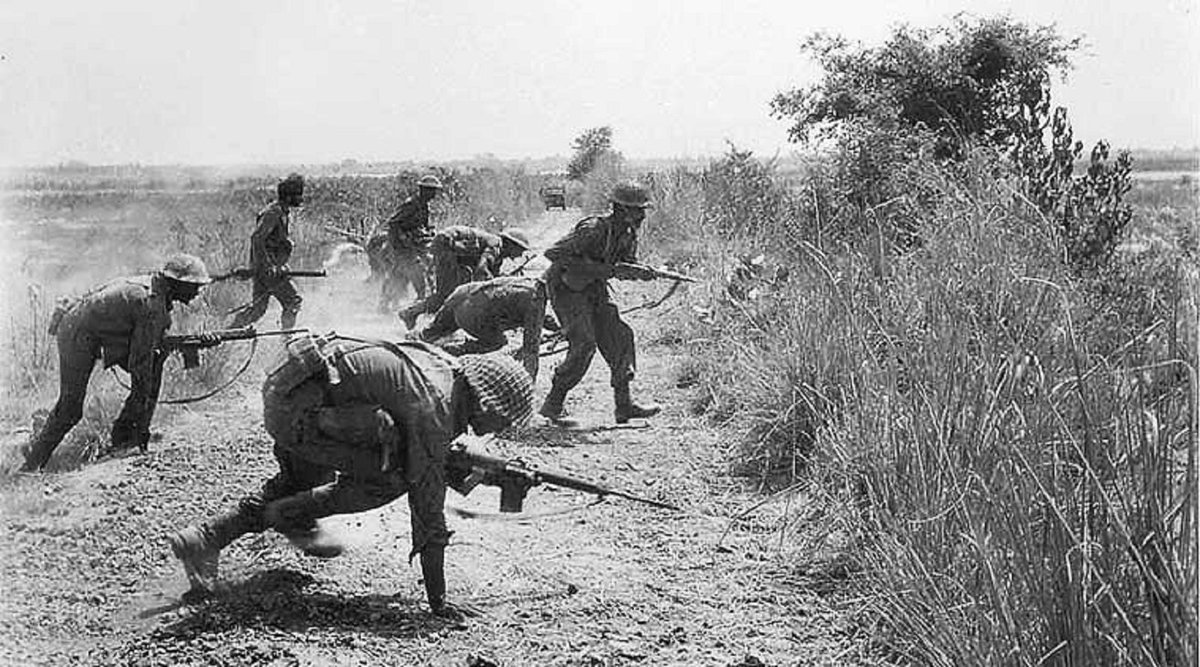
Throughout the mid-late 1960s questions were increasingly being asked in the upper echelons of the Indian naval officer corps about the role and utility of the carrier in any future conflict with Pakistan. Many considered her too valuable to risk.
The Soviet defence minister, Marshal Malinovsky, weighed in on the side of the sceptics, briefing the Indian defence attache in Moscow that the carrier was an easy target; describing it as "the fifth leg of a dog" and suggesting India's needs would be better met by submarines. 

Attempts to enhance the carrier's strike potential by purchasing American-made A-4 Skyhawks in 1969 fell through when the US Navy refused to sell India the aircraft. The Indian Navy therefore settled for additional Seahawks, reducing the number of Alize's on the carrier to four. 

In June of 1970 the navy discovered serious problems with metal fatigue and cracking within her boilers and it was assessed that she was beyond the ability of local craftsmen to repair fully. Limited repairs were carried out and she proceeded to sea for trials in March 1971. 
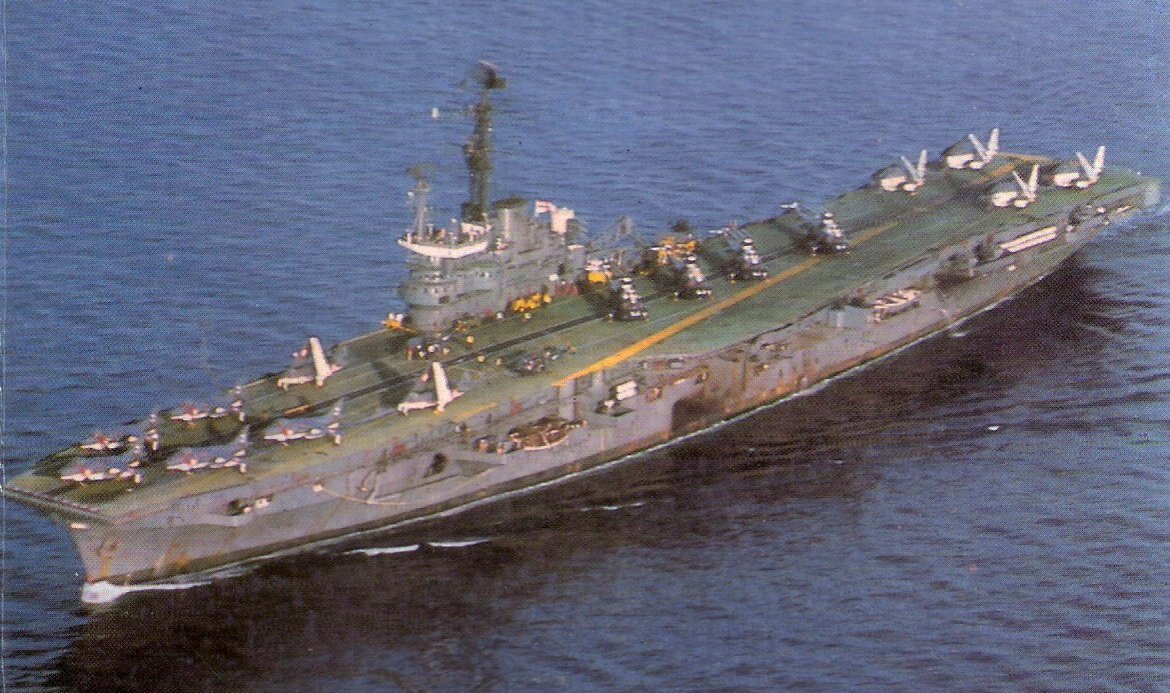
These trials confirmed the carrier's ability to raise steam and sail under her own power, but with her boilers under low pressure she was unable to make more than 16 knots and her catapults were inoperable. Further scratch repairs remedied the latter, but speed was still limited.
The timing of these repairs were almost as fortuitous as the timing of her delivery, with East Pakistan (now Bangladesh) erupting into civil conflict that would precipitate a Pakistani pre-emptive attack followed by Indian war on December 3rd. 
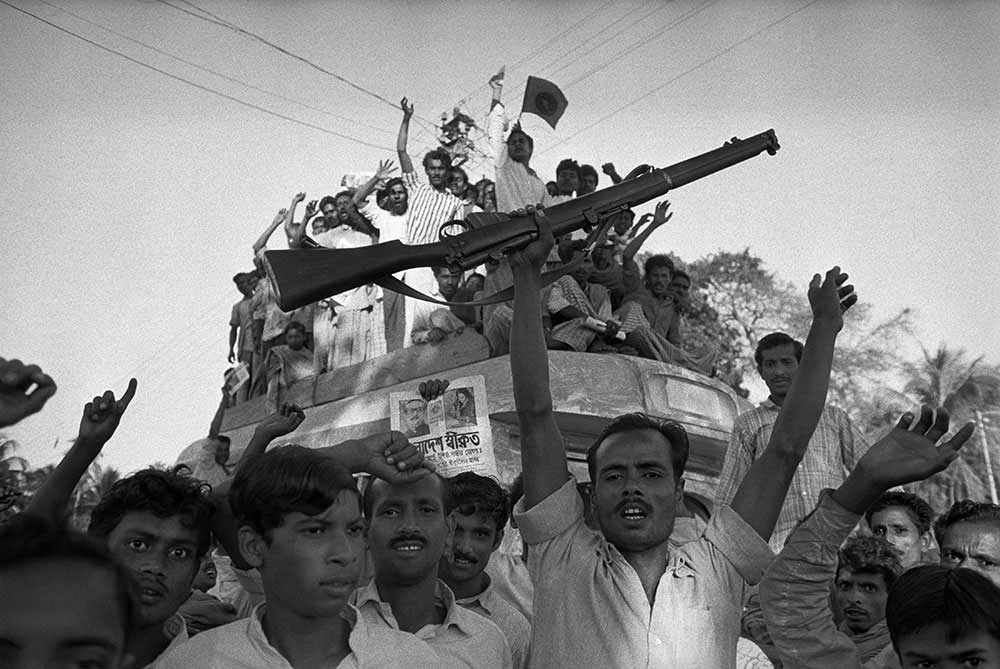
Due to the increased tensions in East Pakistan the Indian Navy had already moved Vikrant to the Eastern Naval Command under Vice Admiral Nilakanta Krishnan. 

A Pakistani submarine, the PNS Ghazi, was deployed to the Bay of Bengal to attack the Vikrant but misled by Indian deception operations into believing she was at Visakhaptnam on India's East coast when, in fact, Vikrant had been moved to the Andaman Islands over 900 miles away. 

Ghazi subsequently sank off Visakhaptnam under contested circumstances. Some sources claim she was depth charged by the R-Class Destroyer INS Rajput and subsequently sank while others claim she may have fallen victim to one of her own mines or a battery explosion.
Despite the issues with her boilers Vikrant was on-station from December 4th 1971 and launched numerous raids against coastal targets including Cox's Bazar and the Port of Chittagong until the 8th. She operated round the clock, flying off her Seahawks by day and Alize's by night. 

From the 8th her strikes shifted to the retreating Pakistani armed forces. Wind speeds dropped on the 10-11th and she was restricted to only operating her Alize's, which scored a notable success when they attacked and badly damaged the patrol boat Jassore. 



Her Seahawks were back in action from the 12th until the end of the war, flying a further 28 combat sorties before the ship was forced to come off-station to refuel. 

To say that the 1971 war had been a success for the Indian carrier air arm would be an understatement. The high-profile role of the ship and her aircraft in the conflict secured the ship and the future of Indian carrier aviation in the face of growing pre-war scepticism. 

What came next was to shape the Indian carrier air arm for 30 years. In July 1972 the British Aerospace G-VTOL STOVL demonstration aircraft landed on Vikrant during its overseas sales tour. 

The arrival of this novel aircraft interested the Indian Naval command, who had been looking for a replacement for their ageing Seahawks for some time, and laid the foundations for the next generation of Indian carrier aircraft: Sea Harrier. 

Vikrant spent the remainder of the 1970s at a reduced state of readiness, she still required new boilers and these would not be provided until an extensive modernisation in 1979. This upgraded her radars & communications systems. Facilities to operate Sea Harrier were also added. 

INAS 300 transitioned fully to Sea Harrier during the early 1980s and first embarked on the modernised Vikrant in 1984 alongside new Sea King helicopters which replaced the venerable Alizes in the Anti-Submarine role. 

Further progressive modifications were made over the course of the 1980s, including the removal of the catapult in order to fit a 12 degree ski-jump in 1985.
In 1987 India acquired its second carrier: INS Viraat, better known in the UK as the Falklands veteran HMS Hermes.
In 1987 India acquired its second carrier: INS Viraat, better known in the UK as the Falklands veteran HMS Hermes.

India now had, for the first time in its history, a force of two (albeit old) carriers. This standard was to become the aspiration for the Indian Navy's future plans as they went into the 20th century. 

This impressive achievement was, however, short-lived. In 1994 Vikrant suffered a serious fire from which she never recovered. Reduced to reserve status in 1995 she was finally decommissioned in January 1997. 

This once again left India with a sole carrier, the 3old Centaur class carrier INS Viraat.
Purchased in 1986 the former HMS Hermes received an extensive refit in Devonport, including new landing aids, radars, NBC protection and boilers, before she was delivered to India.
Purchased in 1986 the former HMS Hermes received an extensive refit in Devonport, including new landing aids, radars, NBC protection and boilers, before she was delivered to India.

Viraat sailed from Devonport to Mumbai in 1987 and once in India began her work-up with the navy's new Sea Harrier aircraft. 

All was not well with the venerable old ship and in 1993, six years after her delivery, she suffered a serious engine room flood which put her out of action for several months.
She then underwent a minor refit in 1995 and a major life extension between 1999 and 2001.
She then underwent a minor refit in 1995 and a major life extension between 1999 and 2001.

She participated in the Mumbai International Fleet Review in February 2001.
In 2003 she suffered a serious break down and had to be towed back to port for another refit, returning to service in November 2004.
In 2003 she suffered a serious break down and had to be towed back to port for another refit, returning to service in November 2004.

After workup and sea trials she conducted her first major naval exercise off Mumbai in March 2005. At this stage the Indian Navy were making-do with Viraat before the converted ex-Soviet aviation cruiser Baku, renamed Vikramaditya (meaning "brave as the sun") could be delivered. 

Baku, a Kiev-Class "aviation cruiser" had been built by the Soviet navy in the mid 1980s and commissioned into the Soviet Navy in December 1987.
With the collapse of the USSR in 1990/91 she was renamed "Admiral Gorshkov" and served until a boiler-room explosion in 1994.
With the collapse of the USSR in 1990/91 she was renamed "Admiral Gorshkov" and served until a boiler-room explosion in 1994.

While she was repaired and briefly returned to service in 1995 Russia's economic woes were now beginning to bite and she was decommissioned and put up for sale in 1996.
India soon took an interest but years of negotiations ensued before she was finally purchased in 2004.
India soon took an interest but years of negotiations ensued before she was finally purchased in 2004.
The intention was that she would be extensively rebuilt and modernised at the Sevmash shipyards at Arkhangelsk, in Northern Russia, before being delivered to the Indian Navy in 2008. 
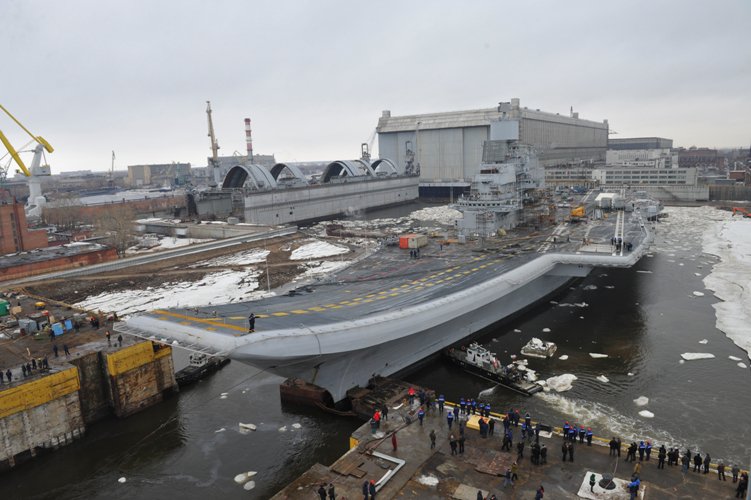
These plans rapidly began to fall apart, it transpired that the Sevmash yards had severely over-promised on what they could achieve, especially considering that they had never built a carrier, and costs spiralled.
Contentious high-level government talks ensued and India eventually agreed to pay an additional $1.2bn for the modernisation, almost doubling the cost of the ship.
Sureesh Metha, India's Chief of the Naval Staff at the time, defended the decision to the media:
"can you get me an aircraft carrier for less than USD 2 billion? If you can, I am going to sign a cheque right now!"
"can you get me an aircraft carrier for less than USD 2 billion? If you can, I am going to sign a cheque right now!"

After further contentious bartering between the two governments, with the Russian government demanding $2.9bn for the ship and India demanding they pay $2.1bn the eventual price ($2.35bn) was agreed in March 2010.
Further controversy struck a month later when it transpired that a senior Indian Naval officer, Commodore Sukhjinder Singh, had probably been blackmailed in order to influence the negotiations. 

Russia also sold MiG-29KUB carrier aircraft to India as the replacement for their ageing Sea Harriers, with an initial 16 aircraft ordered in January 2004.
Aircraft delivery began in 2009 and the first squadron INAS 303 stood up at INAS Hansa, near Goa, in 2013.

Aircraft delivery began in 2009 and the first squadron INAS 303 stood up at INAS Hansa, near Goa, in 2013.


The ship was finally completed, delivered and commissioned into the Indian Navy by Prime Minister Narendra Modi in a ceremony in Kawar on January 7th 2014, having sailed over over 10,000 miles to arrive in India.
She was five years late and more than 100% over budget.
She was five years late and more than 100% over budget.

However, before her arrival she was greeted ~2,000 miles off the West coast of India by the Viraat and her escort group, marking the first time in almost twenty years that two Indian carriers were operating together. 
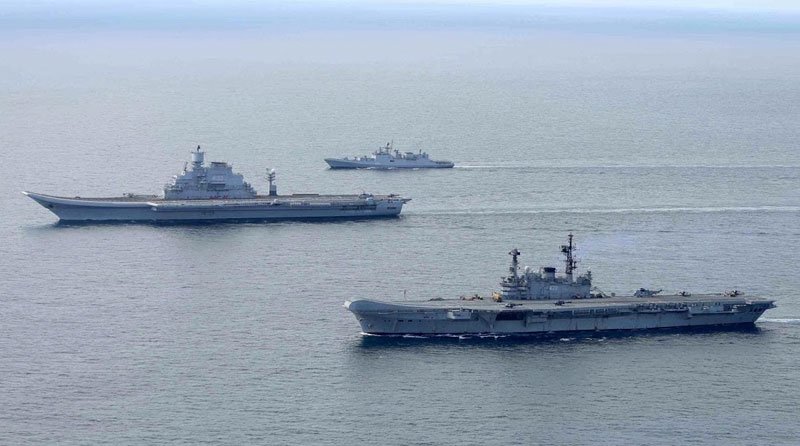
The eventual replacement for the Viraat also got underway in 2004.
Plans for the first Indian-built carrier had been in the works since 1999 and an order for what would become the second INS Vikrant was placed in 2004.
Plans for the first Indian-built carrier had been in the works since 1999 and an order for what would become the second INS Vikrant was placed in 2004.

Her keel was laid in 2009 at the Cochin Shipyard in Kerala and she was launched in 2013.
Fitting out is expected to last until 2020.

Fitting out is expected to last until 2020.

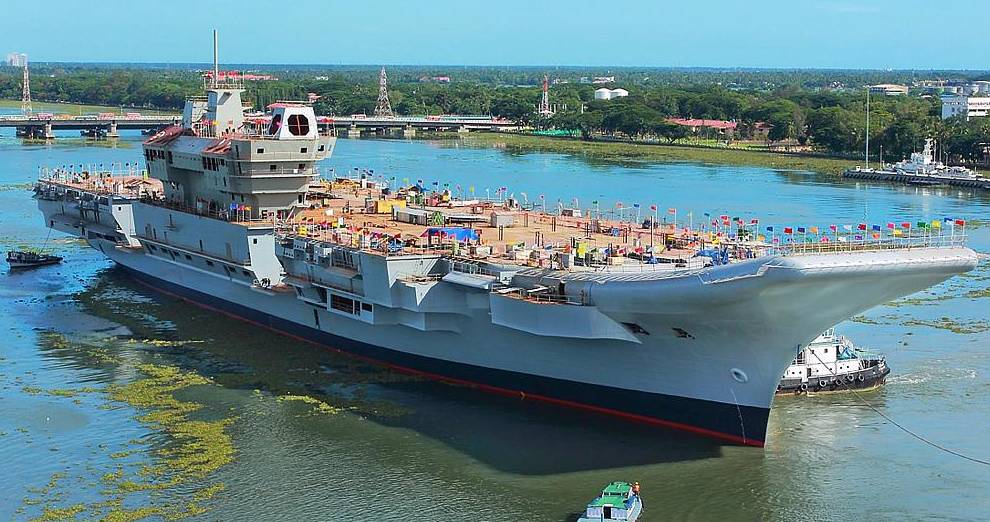
In July of 2016 Viraat, having spent well over 2000 days at sea and steamed over a million miles, finally bowed out in Mumbai along with her Sea Harriers.
As of 2018 plans remain to convert her into India's first maritime museum, moored in Nivati.
As of 2018 plans remain to convert her into India's first maritime museum, moored in Nivati.

As of 2012 for a third, much larger, CATOBAR carrier to be delivered in the 2030s are also well underway. The ship has been prospectively named INS Vishal (meaning, rather appropriately, "Giant").
Four defence companies: BAE Systems, Lockhhed Martin, DCNS and Rosoboronexport have all been asked to provide technical and costing proposals and as of 2017 the US has agreed to release the EMALS electromagnetic catapult system for sale to India. 
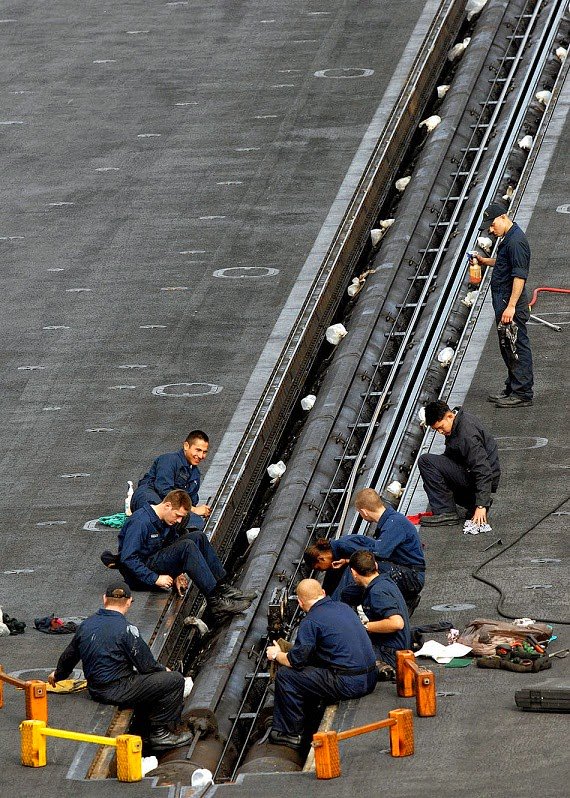
In almost sixty years of carrier aviation the Indian Navy has truly gone the distance. Lt Cdr Tahiliani's first landing in 1961 set the stage for a naval air arm willing and able to do their utmost, often with old or unreliable equipment. 



If there's one thing we can be certain of, it's that the next chapter in India's long carrier story is only just beginning.
Engaging Strategy, Out.
Engaging Strategy, Out.

@Aryanwarlord @D__Mitch @StrategyBin @combat_boot @Verdigris_blog @GazTheJourno @DefenceSenseUK @cdrsalamander @TotherChris @UKDefJournal @thinkdefence @DannoMkII @Foliohat @fightingsailor @gjb70 @pinstripedline @sebh1981 @MilOrthoTrauma @C____________A @LukeEclair
@LandSharkUK @Foliohat @PeteNorth303 @NavyLookout @war_student @Soerings @SciteCito @TameCrab @scottmox
• • •
Missing some Tweet in this thread? You can try to
force a refresh







